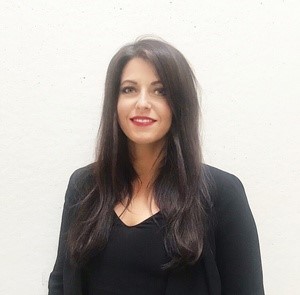The real estate industry’s digital transformation, through the influence of PropTech, is arguably the sector’s hottest topic right now. But as the innovation race accelerates from disruptive start-ups at its fringe to mainstream structural shifts, industry players are increasingly tasked with getting up to speed – or being left behind.
Now, JLL and the MIT Real Estate Innovation Lab (REIL) at the Center for Real Estate have joined forces to understand the impact and diffusion of technology in real estate. The outcome is the MIT Tech Tracker, a tool that scouts and tracks cutting-edge technologies in real estate and their progress from concept and invention to the PropTech marketplace and ultimately being taken for granted in our everyday lives.
For the first time, they’re pinpointing the puzzle pieces of disruption that are leading the industry into the future and asking the questions that real estate professionals have perhaps been afraid to raise.

Dr. Andrea Chegut is the Director of the MIT Real Estate Innovation Lab, which investigates innovative products and technologies, their financial value and economic growth impacts in the built environment.
“The MIT Technology Tracker is a tool not dissimilar from the tried and tested Yahoo Finance Stock Tracker,” explains Dr. Andrea Chegut, Director, MIT REIL. ‘But, instead of tracking stock prices for companies we track, through various sources, the development of technologies.
“The algorithms in the technology tracker gather, follow and measure the awareness and commercial uptake of technologies. The main purpose is to understand how technologies are developing momentum in the field, without the hype,” Chegut adds, noting that the tracker presents the information in three ways to serve different searches.
“The three tools released in MIT Tech Tracker beta are a Top Technology chart based on MIT algorithms, a comparative Technology Awareness tool, and a Technology Deep Dive tool that allows users to gain guided insights into technology impacting their segment of the built environment.”
Digital transformation credentials
MIT in Cambridge, Massachusetts, is notable for its global impact in technological advances and, in fact, has produced many technologies we have come to take for granted in the built environment from Auto-CAD and AI to Property Price Indexes and 4D Printing. And real estate services firm JLL also has a history of technological innovation. It recently formed JLL Technologies to align and expand its technology and digital initiatives, while accelerating innovation for its investor and occupier clients.
Meanwhile, earlier this year, the company launched JiLL, an AI-powered, conversational smartphone app that helps employees streamline their work and be more productive. JLL’s technology portfolio also includes advisory solutions like Utilization Intelligence which helps clients better leverage their real estate footprints, and products like Corrigo, a cloud-based facility management platform to aid digital transformation.

Ben Breslau leads the delivery of JLL’s research insights and services to investor, occupier, and institutional clients and presents the firm’s thought leadership in the marketplace.
“JLL and the MIT REIL have been partners from the start,” says Ben Breslau, JLL’s Chief Research Officer, Americas. “Our focus has been to learn about technologies and the path they take from the glimmer of an invention to an actual, tangible, commercial product.”
Breslau adds: “The partnership between JLL and the MIT REIL melds two dynamic forces that come at innovation from different perspectives. We used a series of interactive and immersive workshops with experts from both sides to bring together a unique view of the changing products, processes, and uses in real estate.“
Mapping the digital future of real estate
Indeed, for both JLL and MIT, the tracker has very clear objectives and identifying the path of progress is just one of them.
“Most of the time we are led by a media cycle of hype. What is Blockchain up to? What is the latest gadget? These are great, but JLL works with real clients who need to make business decisions based on evidence,” Breslau notes.
Ultimately, the tracker has been constructed in such a way as to learn and grow alongside the industry it tracks.
“We’ll use the Tracker to guide our global real estate clients towards a more productive use of technologies,” Breslau says. “MIT will continue to develop additional tracking and insightful measures about technology.”
“Together, we’ll continue to learn about technological change, genuine disruption and get out in front of that hype,” he concludes.



